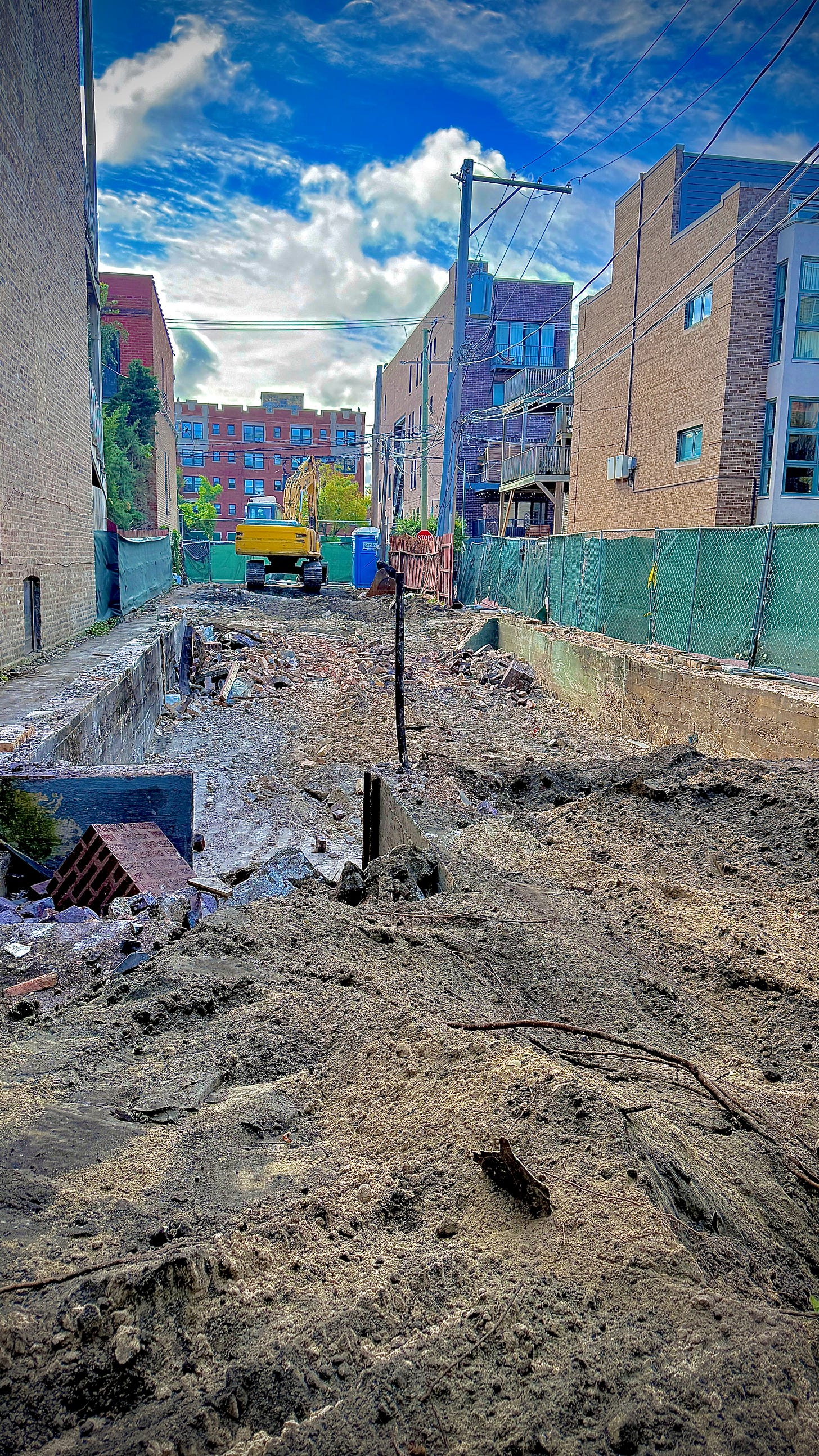At first, it was just the construction fence. The moment I saw it, I knew what was coming. Another old house was about to be torn down, and in its place a modern one would rise, as if history itself could be swapped out for something sleeker. The sight of that fence made me immediately sad, as though the end had already been declared.
Every day I walk past with little Finn, and every day I stop and stare and feel moody and reflective. At first, the house still stood, its windows intact, its roof steady. But soon the machines arrived, and now the walls collapse into piles of wood and plaster. Each day more of it disappears, and each day it takes something with it.
For decades, the house belonged to an old couple. I didn’t know them well, but I was aware of their presence. She was always by his side, guiding him gently, his back bent low with age. They moved together as though time had woven them into one body—his leaning, hers steadying.
And then there was her garden. She called it the Monarch Butterfly Sanctuary. It wasn’t showy, just tall green stalks with wide leaves. But every summer, the monarchs came, their orange-and-black wings lighting on the green like lanterns. I would wait for them each year, pausing on my walks to watch them drift and settle (and keep Finn from pouncing on them). That little patch of green became something sacred because she named it, tended it, and made space for life to return.
Now the couple is gone, and the house is being dismantled day by day. But the garden still stands, at least for now. Against the backdrop of rubble, the stalks remain upright, quiet and stubborn in the autumn air. I don’t know if they’ll survive the season, or if the demolition will swallow them, too. But I hope they do. I hope the sanctuary lasts long enough for another summer, long enough for the monarchs to come home again.
That hope feels like its own kind of sanctuary. A reminder that even when the big things fall, the small things endure for a time—quiet, ordinary, but intensely alive. At sixty-two, I know how fragile life is, how quickly what was sturdy can vanish. And still, I look for the garden. I stop, I stare, I feel nostalgic, for what exactly I do not know. And I hold onto the possibility that some pieces of history—some gestures of care—cling longer than we expect.
Because maybe that’s what matters in the end: not whether things last forever, but whether they last long enough to remind us of beauty.
Because not everything is lost all at once, sometimes it lingers, green against the dust, just long enough to remind us of what was. And sometimes, that reminder is all that's needed.
Still, walking by that house each day has me asking myself what endures when I am gone. What traces of me will remain, and what will be forgotten? The old couple left a sanctuary for butterflies, and I will always remember it.
So I’ll turn the question to you: what do you want to be most remembered by, and are you living a life that will make it so?
I have created a private FB page for women of a certain age for fun, support, reflection, and love. We would love to have you!

